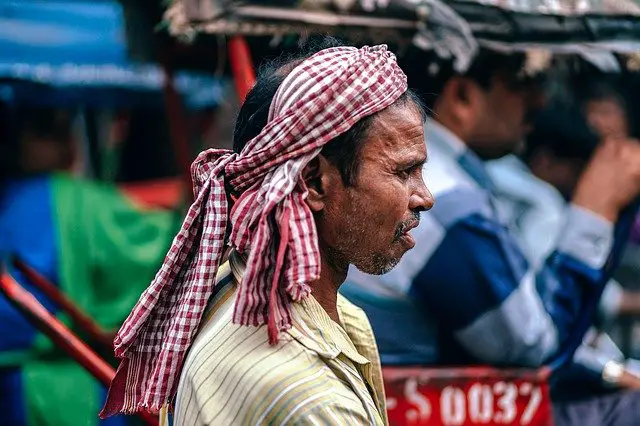The caste system, which can be defined as perhaps very specific to the South Asian region and specifically India which has prevailed for centuries. Scholars have often defined caste as ‘a closed class’. This definition can be understood to specifically analyse the economic dimensions attached to the sense of compartmentalisation that is present in the nation. To say how one can entirely dismantle the system in place is perhaps a question that needs to be understood from both the economic and social lens. The Human Rights Watch report cites:
“India’s caste structure is probably the world’s longest surviving social hierarchy. A defining feature of Hinduism, caste encompasses an ordering of social groups on the idea of formality purity. an individual is taken into account as a member of the caste into which he or she is born and remains within that caste until death, although the actual ranking of that caste may vary among regions and over time. Differences in status are traditionally justified by the religious doctrine of karma, a belief that one’s place in life is decided by one’s deeds in previous lifetimes.
Despite its constitutional abolition in 1950, the practice of “untouchability”-the imposition of social disabilities on persons by reason of birth into a specific caste- remains considerably a neighbourhood of rural India. Inter-caste marriages are a key aspect when it comes to understanding the cast conflict in India. Caste has been rigidly preserved through the notions of endogamy and strict adherence to rules which prevent the upper castes or the lower castes to mingle and procreate.”

The caste conflict has shaped the domestic and public spheres of several of our lives and one of the primary ways which Ambedkar had spoken, to destroy caste-based discrimination, is to let the people engage in inter-dining activities and encourage inter-caste marriage. It is only through these two aspects, he emphasised, will India truly be able to dismantle the system in place and move beyond it to truly develop as a society.
Institution of marriage
The institution of marriage is closely related to the inter-caste angle as it speaks of how the system in place prescribes the notion of pollution and purity through the concept of a matrimonial union. The contemporary usage of those can be observed through caste-based matrimony websites which are still utilised under the ‘classified’ section of the newspaper advertisements to show how they are considered a main source for the matchmaking process. These rigid systems are now often being capitalised and marketed by several agencies which have created specific matrimonies only to cater to these prejudices of the society and thus encourage strict endogamous marriages within a particular community and caters to their need of adhering to the caste-based ideology.
Legal frameworks
The Indian state has also established that it is a ‘secular’ and ‘socialist’ nation. A large part of these two terms can be defined to make sure the caste-based ideology is uprooted and that the public lives of the Indian citizen are facilitated better. Also government programs such as the ‘Dr Savita Ben Ambedkar Inter Caste Marriage Scheme’ seek to assist couples who have taken a ‘socially bold measure’ in their marriage to settle down in the early stages. Any inter-caste marriage involving a Dalit is rewarded under the scheme. Initially, only five couples were given approximately Rs 50,000 in 2014-15, but this number increased to 72 couples in 2015-16.
Also Read: Inter Caste and Inter-Religious Marriages and The State Intervention
The Indian scenario
People have been long oppressed from being able to access jobs and hence through reservations and several commissions adequate representation and opportunities have been ensured to the people who have been denied their rights for centuries. This is where perhaps the larger question of public and private spheres clashing comes into question. Economic empowerment is not the only form of empowerment if the people still practice endogamy within their own caste. Few inter-caste marriages are still being able to be carried out peacefully and most of the times it is a fight to establish power and deny social mobility coupled with honour killings which brings an important question to our minds and that is: how far will government empowerment work as long as people don’t change within their own private institutions like marriage, kinship, and children? BR Ambedkar in his book, ‘Annihilation of Caste’ says, “I am convinced that the real remedy is intermarriage. The fusion of blood can alone create the feeling of being kith and kin, and unless this feeling of kinship, of being kindred, becomes paramount, the separatist feeling—the feeling of being aliens—created by caste will not vanish” and thus it can be definitively said that strides in inter-caste marriage will be one of the first steps undertaken to move towards shattering the hierarchy in place. When one gives up the familiar ideas of conformity will the evolution and acceptance come around and the system is destroyed.
The way forward: Going beyond the concept of caste
However, people have stood up against the dated norms and resisted the imposition of the same on their families or their children. While several have been successful in being able to defy them and go on with their lives. Some on the other hand have not been able to be successful and have often been on the receiving end of incidents of honour killings and threats which has made them difficult to navigate around society. The social mobility especially an upper-caste woman marrying a lower caste man brings out the lens of sexism within inter-caste marriage. Only when one consciously takes up the decision to go beyond their known surroundings, family, and community and expose oneself to people one will be able to go beyond the imposed perspectives and understand the alternate point of view. Reaching out and mingling with people who have different experiences enables a family’s own culture and also simultaneously preserves different cultures while simultaneously giving rise to new ones.
